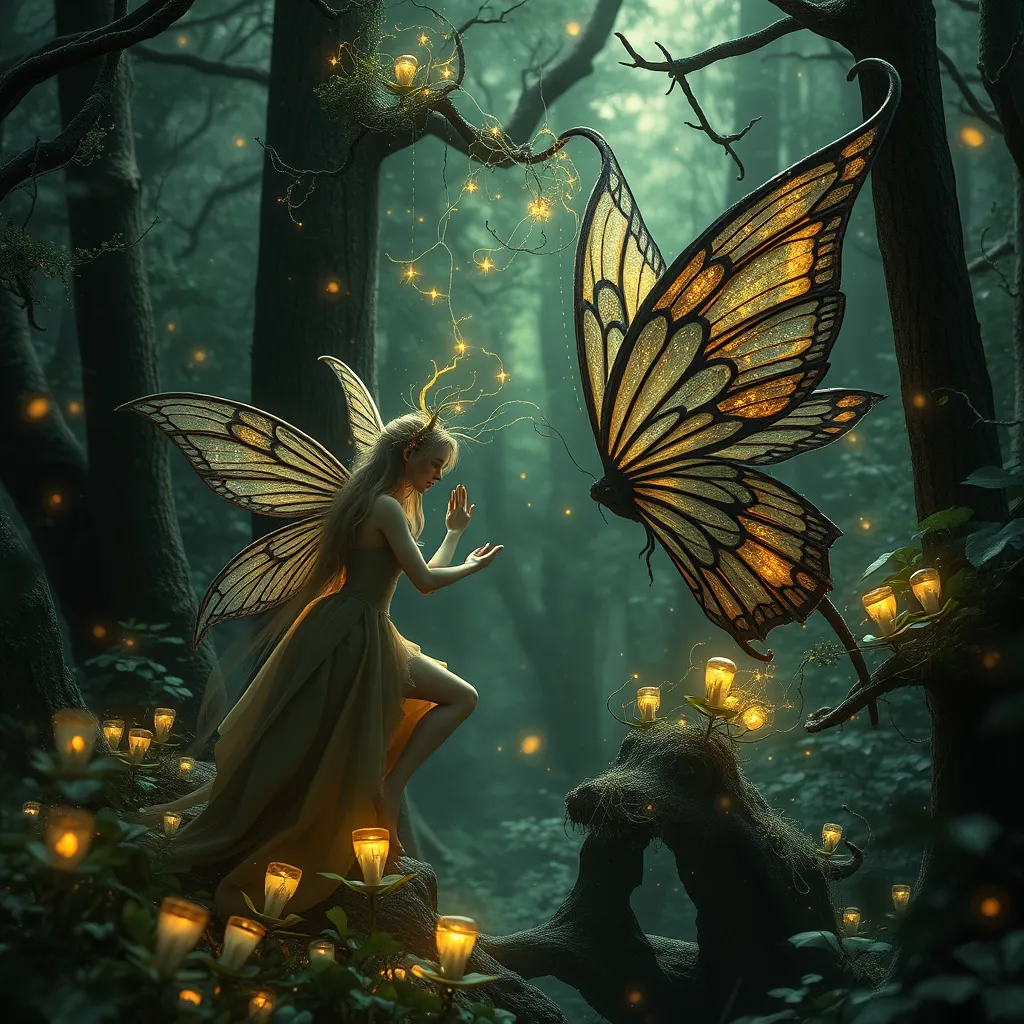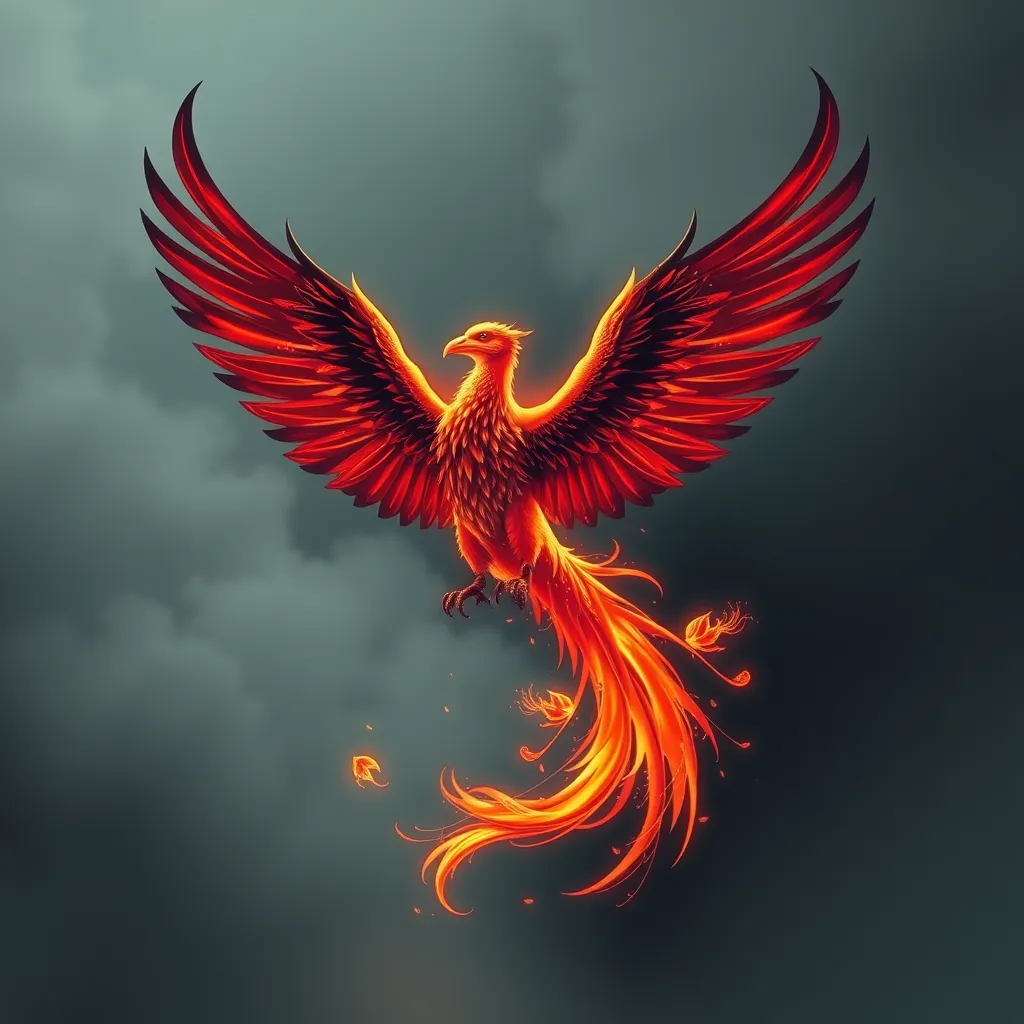The Enchanting Realm of Faerie: From Folklore to Modern Myth
I. Introduction to the Faerie Realm
The concept of faerie, often depicted as enchanting and elusive beings, holds a significant place in various cultures around the world. Faeries, also known as fairies, enchantresses, or elemental spirits, have captivated human imagination for centuries. They are often associated with the natural world, embodying the mysteries and wonders of nature. This article aims to explore the rich tapestry of faerie mythology, tracing its historical roots, evolution, characteristics, and profound impact on modern culture and spirituality.
II. Historical Roots of Faerie in Folklore
A. Origins of faerie tales in ancient cultures
The origins of faerie tales can be traced back to ancient cultures, where folklore served as a means to explain natural phenomena and human experiences. In many traditions, faeries were considered nature spirits, guardians of the earth, and intermediaries between the human world and the supernatural. For example:
- In Celtic mythology, faeries were believed to inhabit the Otherworld, a parallel realm filled with magic and mystery.
- In Norse mythology, the elves and light beings played significant roles, often depicted as guardians of nature.
- In Slavic folklore, Domovoi are household spirits that protect families, embodying the essence of faerie lore.
B. Key folklore elements and common themes
Common themes in faerie folklore include:
- The intertwining of human and faerie worlds.
- Transformation, where humans may be changed into faerie beings or vice versa.
- The representation of faeries as both benevolent and malevolent, highlighting their unpredictable nature.
- Encounters between humans and faeries often serve as cautionary tales, warning against disrespecting the faerie realm.
III. The Evolution of Faerie Mythology
A. Transition from oral traditions to written literature
With the advent of written language, many faerie tales transitioned from oral traditions to written literature. This shift allowed for the preservation of stories and the expansion of faerie mythology. Notable collections, such as:
- The Brothers Grimm’s “Grimm’s Fairy Tales”
- Andrew Lang’s “The Blue Fairy Book”
- Charles Perrault’s “Mother Goose Tales”
These works played a crucial role in shaping modern perceptions of faeries, often sanitizing or adapting the darker aspects of original folklore for a younger audience.
B. Notable literary works that shaped modern perceptions of faeries
In addition to classic fairy tales, several literary works in the 19th and 20th centuries further popularized faerie mythology:
- Shakespeare’s “A Midsummer Night’s Dream” introduced characters like Oberon and Titania, highlighting the whimsical and romantic aspects of faeries.
- J.M. Barrie’s “Peter Pan” brought the character of Tinker Bell into popular culture, showcasing the playful and mischievous nature of faeries.
IV. Characteristics of Faerie Beings
A. Descriptions of different types of faeries (e.g., pixies, sprites, elves)
Faerie beings come in various forms, each with distinct characteristics. Some of the most well-known include:
- Pixies: Small, playful creatures often associated with mischief and fun.
- Sprites: Ethereal beings that are usually depicted as light and airy, often linked to water.
- Elves: Typically portrayed as wise and noble, elves are often guardians of nature and ancient knowledge.
B. Common traits and behaviors associated with faerie folk
Faeries are often characterized by:
- Magical abilities, such as shape-shifting and enchantment.
- A connection to nature, often living in forests, meadows, or other natural settings.
- Unpredictable behavior that can range from benevolent assistance to malicious trickery.
V. The Role of Faeries in Folklore and Society
A. Faeries as symbols of nature and the supernatural
Faeries often symbolize the beauty and danger of nature, acting as reminders of the balance between human civilization and the wild. They embody the mysteries that lie beyond human understanding, serving as a bridge between the mundane and the magical.
B. The moral and cautionary tales associated with faerie encounters
Many faerie tales contain moral lessons, warning against greed, pride, or disrespect for nature. These cautionary tales serve to educate audiences about the consequences of their actions:
- Encounters with faeries can lead to both fortune and misfortune, depending on how one treats them.
- Respecting the faerie realm is often depicted as essential for harmony in both worlds.
VI. Faerie Influences in Modern Culture
A. Representation of faeries in contemporary literature and media
Today, faeries continue to enchant audiences through various forms of media, including:
- Fantasy novels such as “The Cruel Prince” by Holly Black.
- Television shows like “Once Upon a Time” and “The Fairly OddParents.”
- Movies such as “Tinker Bell” and “Pan’s Labyrinth,” which portray unique interpretations of faerie lore.
B. The impact of faerie lore on modern fantasy genres
Faerie mythology has significantly influenced modern fantasy literature and role-playing games, providing a rich source of inspiration for world-building and character development. Elements like magical beings, enchanted realms, and complex moral dilemmas are now staples in the genre.
VII. The Intersection of Faerie and Spirituality
A. Faeries in modern spiritual practices and beliefs
In contemporary spirituality, many people believe in the existence of faeries and incorporate them into their practices. Some view faeries as nature spirits, guides, or protectors, fostering a deeper connection to the earth and its energies.
B. The relationship between faerie lore and natural phenomena
Faerie lore often reflects natural phenomena, with faeries being associated with specific elements, such as:
- Water faeries associated with rivers and lakes.
- Earth faeries connected to forests and rocks.
- Air faeries linked to winds and skies.
This connection emphasizes the importance of nature in faerie mythology and encourages respect for the environment.
VIII. Conclusion: The Enduring Allure of Faerie
A. Reflection on the timeless fascination with faerie mythology
The fascination with faerie mythology endures, as it taps into the human desire for wonder, magic, and connection to nature. Faeries represent the unexplained and the mystical, allowing us to escape the confines of the ordinary world.
B. The continued relevance of faerie tales in today’s world
In a fast-paced modern society, faerie tales continue to resonate, reminding us of the beauty of imagination, the importance of nature, and the lessons learned from our encounters with the unknown. As we explore the enchanting realm of faerie, we find a rich legacy that continues to inspire and enchant generations.




